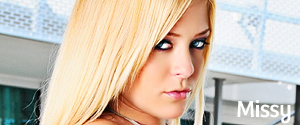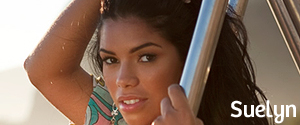Indochine's Top Shelf
Indos Place
Promotional Flyers
Liability for Misappropriating Model's Image for Commercial Purpose
12/03/09 16:50 Model AdviceModel Advice
NOTE: This
article has been significantly edited as of January
24, 2010.
Just a little comment about the recent Judge Judy case where it was ruled that a club promoter who used an urban model’s picture on promotional fliers was liable for $5,000 in damages to the model.
First of all, it’s important to note Judge Judy is sitting in small claims court/arbitration, so that case has no real precedential value (e.g., no other courts will rely on that ruling as the basis for future rulings).
However, the general premise of that case is true – you can’t use someone’s image for a commercial purpose, which means to make money, without his or her written consent. That’s why 50 Cent is suing World Star Hip Hop. They used his image on their website in such a way that it looked like he was affiliated with their site without his written consent. This gave them greater traffic and more ad revenues, which is a commercial purpose.
So what does this mean for your average club promoter, graphic designer, blogger, etc? It means you should get permission from the copyright holder of an image and/or the model before putting it on a flier or otherwise using it to make money. This recent Judge Judy episode will likely inspire more models to act on this type of misappropriation more often.
• What are the damages?
In the Judge Judy case she slapped the club promoter with the maximum allowable damages in small claims - $5000. In reality, damages could be difficult to prove and might have been less.
In California, for example, “The injured party may recover (1) the greater of $ 750 or actual damages, and (2) any profits attributable to the unauthorized use and not accounted for in computing damages. In establishing profits, the burden is on the injured party to prove the gross revenue, and on the violator to prove deductible expenses. The injured party may also recover punitive damages, and the prevailing party is entitled to attorneys' fees and costs.” (C.C. § 3344(a).) That's a lot to digest, but the reality is that it would be difficult for a model prove what revenues a club made due to using her image on a flier without hiring a forensic accountant. Also, since there are no attorneys allowed in small claims court, there would be no legal fees recoverable, although some filing fees might be allowed. So that might mean just $750 in damages for the club promoter (in California).
• Exception for Newsworthy Matters or Matters of Public Interest
One important exception to the invasion of privacy/right of publicity claim is for newsworthy matters. You can use a model or celebrities image on your website if it is associated with a newsworthy matter or a matter of public interest. That is how Bossip.com and Media Take Out get away with using those pics of Beyonce, Melyssa Ford, Ahsanti, etc. to drive traffic to their site without being sued. That’s also one reason why informational blurbs almost always accompany my model postings, as opposed to it just being straight photos.
However, even when the matter is not newsworthy, there’s some evidence the right to privacy might be slightly reduced on the internet. Enter United States v. Gines-Perez, 214 F. Supp. 2d 205, 225 (D. Puerto Rico 2002). In that case the court held: "[P]lacing information on the information superhighway necessarily makes said matter accessible to the public, no matter how many protectionist measures may be taken, or even when a web page is 'under construction.'" "[I]t strikes the Court as obvious that a claim to privacy is unavailable to someone who places information on an indisputably, public medium, such as the Internet, without taking any measures to protect the information."
In terms of copyright (the photographer's cause of action for unauthorized use), which is different from invasion of privacy (the model's cause of action for unauthorized use) the Fair Use Doctrine may permit news related use without permission as well. "The Fair Use Doctrine is codified at 17 U.S.C. § 107 and states that “the fair use of a copyrighted work..for purposes such as criticism, comment, news reporting, teaching (including multiple copies for classroom use), scholarship, or research, is not an infringement of copyright. Fortunately for bloggers, most of what they do is, at the very least, criticism or comment.” (See, Miller, Bloggers, Is Your Content Safe Under The “Fair Use” Doctrine?, BlackWeb 2.0,)
The bottom line is that using images of models on fliers or the internet for a commercial purpose and without their written consent is a bad business practice in general and can expose you to liability. The key trigger is whether the use is commercial in nature; that is, are you using it to make money or promote a product or service. If so, then chances are, whether it is the internet or just a flyer, you will be liable to the model for damages should s/he decide to sue.


Just a little comment about the recent Judge Judy case where it was ruled that a club promoter who used an urban model’s picture on promotional fliers was liable for $5,000 in damages to the model.
First of all, it’s important to note Judge Judy is sitting in small claims court/arbitration, so that case has no real precedential value (e.g., no other courts will rely on that ruling as the basis for future rulings).
However, the general premise of that case is true – you can’t use someone’s image for a commercial purpose, which means to make money, without his or her written consent. That’s why 50 Cent is suing World Star Hip Hop. They used his image on their website in such a way that it looked like he was affiliated with their site without his written consent. This gave them greater traffic and more ad revenues, which is a commercial purpose.
So what does this mean for your average club promoter, graphic designer, blogger, etc? It means you should get permission from the copyright holder of an image and/or the model before putting it on a flier or otherwise using it to make money. This recent Judge Judy episode will likely inspire more models to act on this type of misappropriation more often.
• What are the damages?
In the Judge Judy case she slapped the club promoter with the maximum allowable damages in small claims - $5000. In reality, damages could be difficult to prove and might have been less.
In California, for example, “The injured party may recover (1) the greater of $ 750 or actual damages, and (2) any profits attributable to the unauthorized use and not accounted for in computing damages. In establishing profits, the burden is on the injured party to prove the gross revenue, and on the violator to prove deductible expenses. The injured party may also recover punitive damages, and the prevailing party is entitled to attorneys' fees and costs.” (C.C. § 3344(a).) That's a lot to digest, but the reality is that it would be difficult for a model prove what revenues a club made due to using her image on a flier without hiring a forensic accountant. Also, since there are no attorneys allowed in small claims court, there would be no legal fees recoverable, although some filing fees might be allowed. So that might mean just $750 in damages for the club promoter (in California).
• Exception for Newsworthy Matters or Matters of Public Interest
One important exception to the invasion of privacy/right of publicity claim is for newsworthy matters. You can use a model or celebrities image on your website if it is associated with a newsworthy matter or a matter of public interest. That is how Bossip.com and Media Take Out get away with using those pics of Beyonce, Melyssa Ford, Ahsanti, etc. to drive traffic to their site without being sued. That’s also one reason why informational blurbs almost always accompany my model postings, as opposed to it just being straight photos.
However, even when the matter is not newsworthy, there’s some evidence the right to privacy might be slightly reduced on the internet. Enter United States v. Gines-Perez, 214 F. Supp. 2d 205, 225 (D. Puerto Rico 2002). In that case the court held: "[P]lacing information on the information superhighway necessarily makes said matter accessible to the public, no matter how many protectionist measures may be taken, or even when a web page is 'under construction.'" "[I]t strikes the Court as obvious that a claim to privacy is unavailable to someone who places information on an indisputably, public medium, such as the Internet, without taking any measures to protect the information."
In terms of copyright (the photographer's cause of action for unauthorized use), which is different from invasion of privacy (the model's cause of action for unauthorized use) the Fair Use Doctrine may permit news related use without permission as well. "The Fair Use Doctrine is codified at 17 U.S.C. § 107 and states that “the fair use of a copyrighted work..for purposes such as criticism, comment, news reporting, teaching (including multiple copies for classroom use), scholarship, or research, is not an infringement of copyright. Fortunately for bloggers, most of what they do is, at the very least, criticism or comment.” (See, Miller, Bloggers, Is Your Content Safe Under The “Fair Use” Doctrine?, BlackWeb 2.0,)
The bottom line is that using images of models on fliers or the internet for a commercial purpose and without their written consent is a bad business practice in general and can expose you to liability. The key trigger is whether the use is commercial in nature; that is, are you using it to make money or promote a product or service. If so, then chances are, whether it is the internet or just a flyer, you will be liable to the model for damages should s/he decide to sue.

Comments


